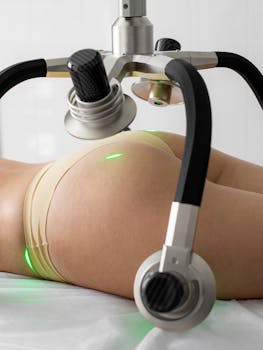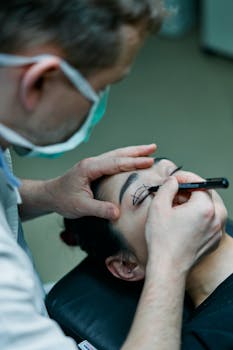Interested in a less invasive way to lift and tighten? A laser breast lift offers a minimally invasive option that uses targeted energy to stimulate collagen, tighten skin, and provide a subtle lift without the extent of a surgical mastopexy. This post explains common approaches, what to expect during recovery, and realistic laser breast lift results so you can decide whether a non-surgical route fits your goals.
Laser-assisted breast lift: types and how they work
Clinics describe several techniques under the umbrella of non-surgical breast lift methods. Common devices use ablative or non-ablative lasers and fractional resurfacing to heat deeper layers of the skin and encourage remodeling. Examples include fractional CO2 and erbium systems adapted for soft-tissue tightening and skin contraction. Other technologies marketed for similar goals include radiofrequency and ultrasound devices; these are not lasers but share the same intent of stimulating collagen to improve firmness.
Understanding the basic science helps set expectations: controlled thermal injury from a device prompts the body to produce collagen and re-organize existing fibers, which can result in firmer tissue and mild elevation of the breast envelope over several months. For a primer on therapeutic laser mechanisms, see this overview: how medical lasers deliver energy to tissues.
Who is a good candidate and what to expect in consultation
Ideal candidates for breast lift laser treatment are people with mild-to-moderate skin laxity, good underlying breast tissue and realistic goals. Those with significant ptosis (sagging) or excess tissue typically need surgical mastopexy for dramatic lift. During a consultation a provider will evaluate breast shape, skin quality, prior surgeries, and any history of radiation or severe scarring that could affect outcomes.
Procedure details and recovery timeline
Most office-based laser sessions last 30–90 minutes depending on the area treated. Local anesthesia or topical numbing is common; systemic sedation is rarely required. Post-treatment you may experience redness, swelling, and a sunburn-like sensation for a few days. Mild discomfort can be managed with oral analgesics. Because there is usually minimal tissue removal, downtime is often shorter than with traditional surgery—some patients return to light activities within a few days and avoid strenuous chest or upper-body exercise for two to four weeks.
Results evolve over time. Immediate tightening may be noticeable, but most improvements develop over three to six months as collagen rebuilds. Expectations should be modest: a laser approach is designed to improve skin quality and provide subtle elevation rather than replace a surgical lift.
Does laser breast lift work? Evidence and realistic outcomes
One common question patients ask is: does laser breast lift work? Clinical studies show that energy-based devices can improve skin laxity and texture, but evidence for substantial lifting comparable to surgery is limited. Outcomes vary by device, practitioner skill, and individual healing response. Many providers combine breast lift laser procedures with supportive measures like external bra therapy or minor tissue shaping to enhance results.
Reviewing before-and-after photos and published studies helps set a realistic benchmark for laser breast lift results. Ask your provider about objective measures used in their practice and whether they collect patient-reported outcomes.
Risks, limitations, and safety considerations
Although non-surgical, laser-based procedures carry risks including burns, pigmentation changes, prolonged redness, and rare scarring. Choosing a clinician experienced with breast anatomy and energy-based devices reduces complications. Patients with certain skin types or active skin conditions may be advised against treatment. Discuss every medication and supplement you take before a procedure to avoid interactions that increase bruising or affect healing.
Combining treatments and long-term planning
Some patients combine breast lift laser treatment with other minimally invasive therapies—such as fillers, fat grafting, or skin resurfacing—to address volume and contour. Others view laser lift as part of staged care, accepting modest initial improvement and reserving surgery for later if more dramatic lift is desired. For general surgical recovery comparisons and timelines, you may find additional context in this related article: descriptive anchor text.
- Laser treatments are best for mild-to-moderate laxity and skin-quality improvement.
- Expect gradual improvements over several months rather than an immediate, dramatic lift.
- Risks are lower than surgery but not absent; provider skill matters.
Q: How many sessions will I need?
Answer: Most practices recommend a series of treatments—often 1–4 sessions—spaced weeks apart. The exact number depends on the device, initial laxity, and desired degree of improvement.
Q: How long do results last?
Answer: Results can persist for months to years, but aging, gravity, and lifestyle factors influence longevity. Maintenance sessions or future surgical options may be needed for lasting change.
Q: Is it painful?
Answer: Discomfort is usually mild and controlled with topical anesthetics and oral pain medications. You may feel warmth and tightness during and after treatment, with symptoms easing within a few days.






